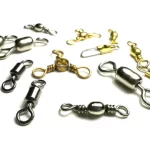Bobbers are one of the simplest yet most effective tools in fishing. Often associated with childhood memories of fishing with a red-and-white float, they are much more than just beginner gear. Despite being overlooked by some seasoned anglers, bobbers play a critical role in detecting bites, controlling bait depth, and refining fishing strategies.
Used for centuries in various forms, bobbers have evolved, but their purpose remains the same—signaling an angler when a fish strikes below the surface. From novices to experienced anglers, understanding the nuances of bobber fishing can elevate one’s success on the water.
Nick Morrison, manager of The Florida Angler in Clermont, Florida, shares insights into the significance of bobbers and their many applications. Whether targeting panfish in a shallow pond or adjusting for deeper waters, mastering bobber fishing can be a game-changer.

What is a Fishing Bobber?
Sometimes referred to as a float, a bobber is a buoyant device attached to a fishing line. Typically made of plastic, cork, or wood, bobbers are designed to keep bait at a specific depth and indicate when a fish bites. Their movement—whether a dip, bob, or complete submersion—alerts the angler to action below the surface.
Modern bobbers come in various styles, including fixed, spring, and slip bobbers, each suited for different fishing conditions.
Bobber Anatomy: Components and Function
Though available in many shapes and sizes, all bobbers share essential components:
- Body: The floating portion, made from cork, plastic, or foam, designed to suspend bait at the desired depth.
- Attachment Mechanism: A spring, clip, or slip-through design secures the bobber to the fishing line and allows for depth adjustments.
- Weight: Some bobbers include internal weights for stability and improved casting.
Brightly colored for visibility, bobbers help anglers detect even the subtlest bites, making them indispensable for various fishing styles.
Popular Bobber Types and Their Uses
Bobbers serve different purposes depending on their design. Understanding their applications can significantly improve fishing efficiency.
- Fixed Bobber: Directly attached to the line at a fixed depth. Ideal for shallow water and panfish.
- Bubble Float: Filled partially with water to aid casting. Useful for delivering lightweight baits or flies with spin tackle.
- Cigar Float: Long and slender, often weighted for sensitivity. Common for crappie and bluegill.
- Waggler Float: Attaches only at the bottom, making it ideal for controlled casting and depth adjustments.
- Spring Bobber: Quickly adjustable for varying depths, perfect for locating schooling fish.
- Popping Cork Bobber: Creates surface disturbance to attract predatory fish like redfish and speckled trout.
- Dink Float: Resembles a strike indicator, standing up when a fish bites. Effective for subtle takes.
- Slip Bobber: Allows deep-water fishing while maintaining easy casting and controlled bait depth.
Each type serves a specific function, allowing anglers to tailor their approach based on species, water depth, and fishing conditions.
Fine-Tuning Bobber Fishing for Success
Selecting the right bobber depends on factors such as fish species, water conditions, and casting requirements. A properly balanced bobber should be light enough to detect bites yet heavy enough to remain stable.
Adjusting bobber depth is crucial—shallow settings work well for species like bluegill, while deeper adjustments are needed for walleye or trout. Anglers should also consider wind, currents, and bait weight when choosing a bobber.
A Look at Bobber History and Collectability
Bobbers have a long history, dating back to ancient Egypt, where reeds were used to suspend bait at set depths. Similar tools evolved in China, Japan, and Europe, with early wooden and cork designs emerging in the 16th century.
By the late 19th century, mass production led to the iconic red-and-white round bobbers, now synonymous with beginner fishing. However, handcrafted and vintage bobbers remain collectible, with artists creating unique, decorative designs sought after by enthusiasts.
Bobber fishing is a time-tested method that benefits anglers of all skill levels. Whether refining techniques for deeper water, targeting specific species, or simply enjoying a relaxing day on the water, bobbers remain an essential tool in any tackle box. Understanding the various types and their applications can make a significant difference in fishing success.
Image/Source: Wired2Fish





